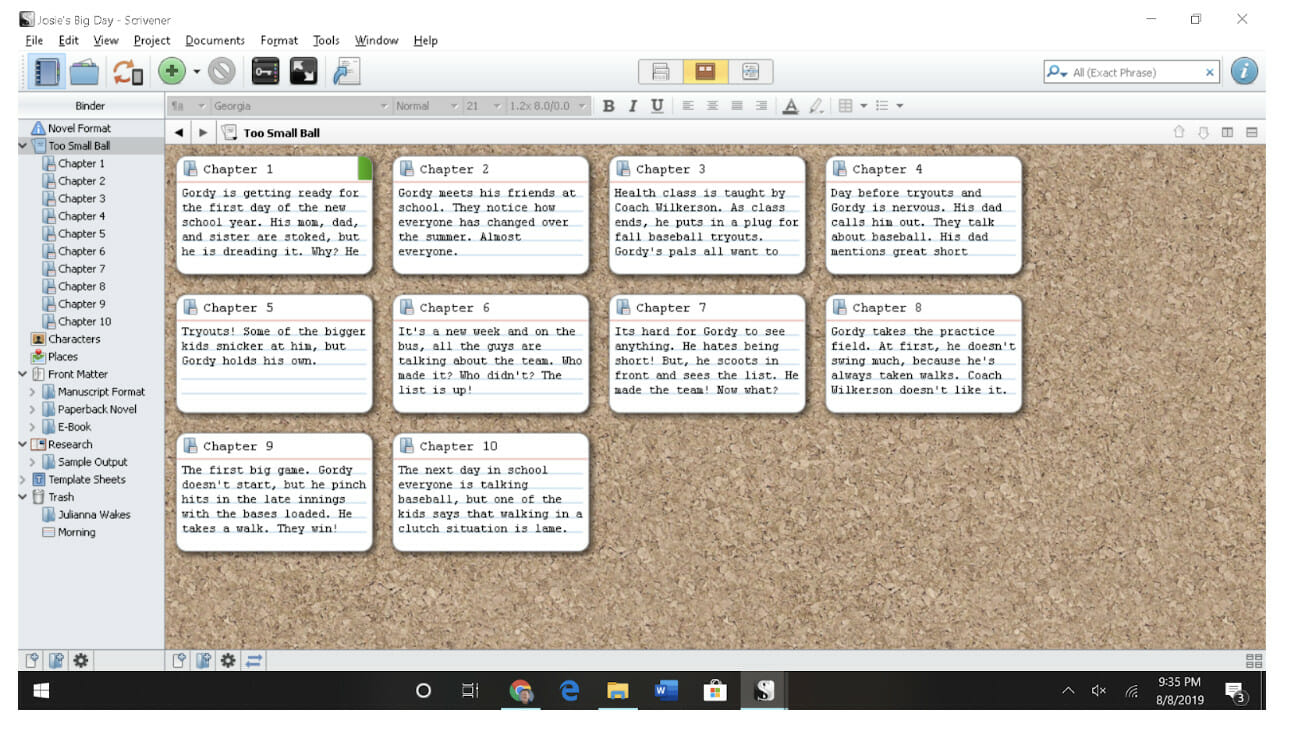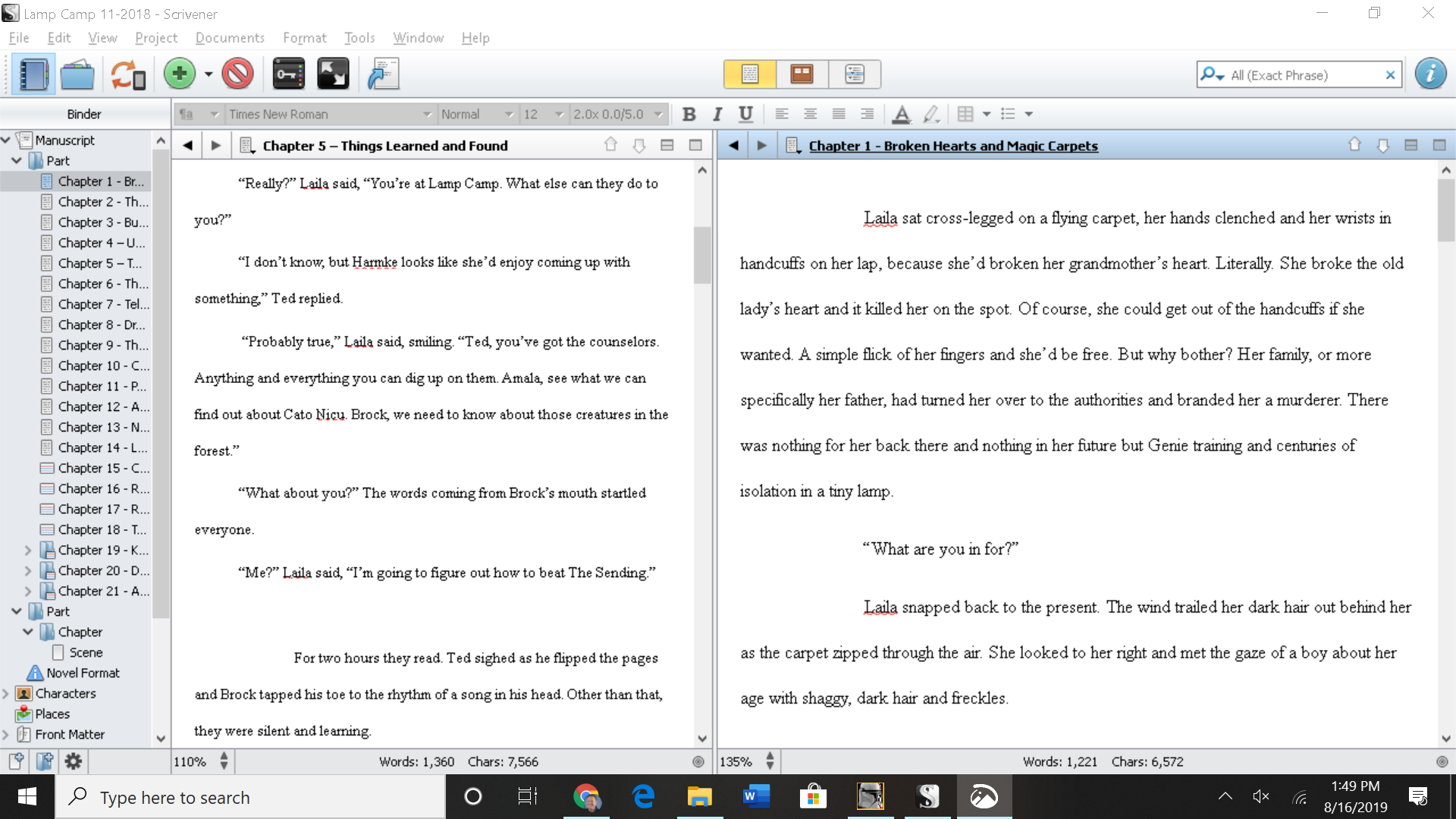As a writer, you’re creative. You have notebooks full of scribblings in every room. You have sticky notes you can’t even read. Your computer? It’s a mess of bookmarks and files stored in a random collection of folders.
It doesn’t matter if you’re a freelance writer or a novelist working on the next epic masterpiece, chances are you could use a little help keeping your magic organized.
This is a common problem; lots of writers are creative but struggle to stay organized!
That’s why, if you spend time in the online writing community, you’ll hear writers raving about Scrivener.
In The Write Life Facebook group, for example, we saw this comment from Brooklin Devine:
“If there were Scrivener gods, I would pay tribute to them (JK…but mostly serious). It has transformed the amount of writing I do. It is hands down the best thing I have ever purchased for my writing. I think the first day I bought it, I was sold because almost instantly, I was able to import all my work over (which I thought was going to be an incredible hassle). Amazing.”
So what exactly is this magical tool Scrivener, and how are writers using it?
What is Scrivener?
Scrivener is a book-writing software program developed by a British teacher and aspiring writer, Keith Blount, who was frustrated by trying to keep all of his notes together.
In fact, he was so frustrated that he learned how to code and create a software dedicated to helping writers get and stay organized. That was Scrivener 1.0 in 2007. In the intervening years, Scrivener has become a major player in the writing software market published by Blount’s company, Literature and Latte.
Scrivener is a software program that you pay for once and download. Then, you simply have it on your computer forever. No annual subscription needed.
Scrivener is available for Windows, Scrivener for Mac, and is also compatible on both iPhones and iPads.

Who uses Scrivener?
There isn’t a genre that Scrivener can’t handle, so don’t worry about that.
If you write novels, short fiction, essays, memoir, or even obituaries, you could make great use of Scrivener. However, if you like things simple, just a screen on a page, it may not be for you.
When you put your money down for Scrivener, you’re paying for all of the organizational bells and whistles. You’ll either love them or you won’t. If you’re not sure where you stand, try the Scrivener free trial first.
Scrivener is the best thing that’s happened to me as a writer! Such an incredible tool, I don’t know how I ever went without it 😂
— T. 🌸 (@epitomeofdelena) August 15, 2019
Scrivener review: What I like about this book-writing software
On first impression, you’ll notice that Scrivener is a program stacked with options. You can do a lot with it to help your writing.
This is a word processor, file cabinet and editor all rolled into one. About the only thing it doesn’t do is make coffee.
Here are some of the most popular Scrivener features.
Write offline
Once you’ve downloaded Scrivener, you don’t need to be online to write with it. I find this keeps my distractions to a minimum.
Never lose your writing
Scrivener autosaves constantly. Not every ten minutes or even five. When you stop writing, you can stop worrying. It’ll be there the next time you open up.
Oh yeah, when you open your document up, you’ll start out exactly where you left off. Nice.
Organize your notes
The corkboard is where you can compile your notes on digital note cards and put them in order. Chapters, subheads, whatever they may be. Move them around. Do whatever you need to, it’s easy.
This feature makes Scrivener amazing as novel writing software. You can see your whole plan laid out in front of you.
Here’s what that looks like:

Writers rave about this feature for making progress on big projects, as you can see in this tweet:
I love Scrivener for all this. I can keep all the info I need in separate files in the same document. I never misplace anything now. Character lists, descriptions, setting, connections to other books…#wedwrant
— Jemi Fraser 🇨🇦 (@jemifraser) August 29, 2019
Templates for every kind of writing
Scrivener templates galore. If there is a type of project you want to write, there is a template for it. In Scrivener itself, when you start a new project, you can choose from a variety of options, including:
Fiction
- Novel
- Novel (with parts)
- Short Story
Non-Fiction
- Non-fiction with subheads
- Research proposal
- Undergraduate humanities essay
Scriptwriting
- BBC radio scene style
- BBC taped drama
- Comic script
- Screenplay
- Stage play (UK)
- Stage play (US)
Miscellaneous
- Persuasive lecture
- Recipe collection
Don’t see what you need? Just Google it and someone has made a Scrivener template for it.
Writer and host of the “Helping Writers Become Authors” website and podcast, K.M. Weiland created her own fiction template. “There are many reasons I love Scrivener, but ultimately the reason I use it is that it puts all my documents for a single story in one place,” she says.

Export to nearly any file type
You can export from Scrivener to PDF, DOCX, RTF, TXT, directly to your printer, and other formats. You can even export to Amazon’s EPUB or MOBI for quick publishing.
With one click your piece of work with all of its various parts is compiled into one file.
The downsides of using Scrivener
I mentioned that Scrivener comes with a lot of really cool bells and whistles, right?
The downside to getting all of those features is that it can be a little difficult to sift through everything to find what you need. This tool can be overwhelming when you open it up for the first time!
To help yourself nail this steep learning curve, make good use of Scrivener’s tutorials. Or cut right to the chase and invest in a course like Learn Scrivener Fast, which will teach you everything you need to know to become a master of the tool.
Don’t try to wing it. You’ll waste a lot of time that could be better served by writing.
How much does Scrivener cost?
Scrivener isn’t free, but honestly, it’s not expensive either.
Here’s the company’s pricing:
Standard License for Windows: $49.99
Educational License for Windows: $42.49
Standard License for Mac: $49.99
Educational License for Mac: $42.49
IOS Products: $23.99
Don’t use the same computer all of the time? No problem. When you buy your Scrivener subscription, you can download it to any computer in your household that runs on the same platform. If you need it for a Mac and for Windows, you’ll have to buy those programs separately.
If you want to try this book-writing software before you buy, Scrivener offers a 30-day free trial.
The bottom line on this book-writing software
Scrivener has become one of the most used — and most copied! — writing programs on the market for good reason. It has a plethora of tools for helping you stay organized and improving your writing efficiency.
The only hitch is you need to commit a little time to learn what the tool has to offer before jumping in head-first. If you are serious about writing, taking the time to learn how to use Scrivener should pay off.
If you’re a Scrivener lover (or hater!), we’re keen to hear from you in the comments! What’s your experience with the tool?
This post contains affiliate links. That means if you purchase through our links, you’re supporting The Write Life — and we thank you for that!
Photo via Peshkova / Shutterstock
Source : Scrivener Review: Why Writers Love This Book-Writing Software













